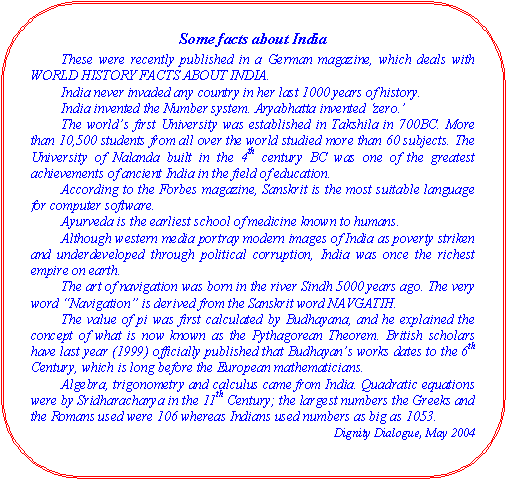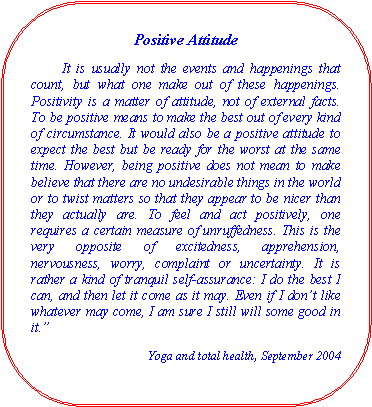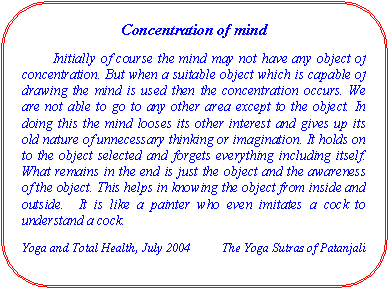|
|
Fat Busters!Blood
vessels are needed to support human tissues, and white adipose tissue is
no exception. In fact, the formation of new blood vessels, a process
called angiogenesis, spurs the expansion of white adipose tissue. Now
Kolonin et al. show that
destroying the supporting blood vessel network for white fat cells
promotes loss of white adipose tissue in obese mice. The authors
identified a specific marker for blood vessels that feed white adipose
tissue, prohibitin. Using in vivo phage display, they identified a
prohibitin-binding peptide, which was then linked to a proapoptotic
peptide. Mice that were obese as the result of being fed a high-calorie
diet were injected with the chimeric peptide. After nearly 1 month of
treatment, white fat mass was reduced and normal body weight was restored
without toxic side effects. Because human prohibitin is similar to the
mouse molecule, it may be possible to design obesity therapies based
either on the targeted delivery of drugs to fat or on the selective
destruction of fat-associated blood vessels. – LDC May
28, 2004 Science Vol. 304 **** Drug-free
treatment for depression
Creating a new class of antidepressant agents, Neurochemical Research
Group, a division of 12 to 20 Plus, Incorporated, announced its marketing
of AnaplexTM, the first drug-free treatment for anxiety and depression
based on protein constituents that serve as neurotransmitters precursors.
Anaplex creates a sense of well being due to the action of key
neurotransmitters working in precise harmony in the brain. Serotonin and
norepinephrine are the most significant neurotransmitters depleted or
deficient in brains of people who are depressed. Composed
of pharmaceutical grade amino acids and extensively researched nutrients,
Anaplex is designed to simultaneously enhance the brain amine levels of
both norepinephrine and serotonin promoting
neurotransmitter restoration. Anaplex
contains precursor nutrients that have no inherent toxicity and therefore
offers a “no side effects” profile. December
2003, Journal of Psychosocial Nursing, Vol 41, No.12 **** Changing
the brain through Meditation
Scientists
have known for some time that when people meditate, their brain waves
change, differing from those typical of sleep, wakefulness, and dreaming.
Now, a study has found that long-time practitioners of transcendental
meditation (TM) have brain waves typical of a meditative state even when
they’re not meditating. Study
author Frederick Travis, Ph.D., director of the EEG, Consciousness, and
Cognition lab at Maharishi University of Management in Fairfield, lowa,
discovered this by comparing electroencephalograms (EEGs) of the brain
wave patterns of 17 people who had been mediating for 24 years with those
of people who had mediated for 7 years and others who didn’t meditate at
all. The results were published in the November 2002 issue of Biological
Psychology. “This research suggests that the human brain has an innate capacity to function at much higher levels, where mental processes become very calm, precise, and efficient,” explains Dr. Travis. “In practical terms, this means you can continue to deal with the day-to-day details, but you never get lost in them because you have this expanded sense of self.” 2004,
Reader’s Digest **** |
|
**** |
|
New technology identifies bacteria in space. Researchers
from NASA’s National Space Biomedical Research Institute have created a
DNA chip to characterize unknown, bacteria is space and help identify
biological hazards on Earth.
Standard bacterial probes are organism-specific, says co-developer George
Fox: “If, for example, you’re looking for enteric organisms as an
indicator of contamination, you would define a specific probe for all
enteric organism or maybe for individual ones, such as Escherichia coli”.
By contrast, he explains, the NASA chip has an array of group-specific
probes that are based on the bacterial “tree of life”. The tree
is arranged according to similarities in organisms’ DNA sequences;
organisms whose DNA sequences are similar to each other are more closely
related than organisms with dissimilar sequences. The system
developed by Fox and co-worker Richard Willson exploits the fact that
certain regions of the phylogenetic tree, and uses this association to
identify groups of related bacteria. “Current
probes are very good at identifying organisms that we’ve already seen,
but they completely miss many organisms that fall outside their
purview”, says Willson. “Our chip would at least give genus or
species-level identification, which is good to have when you have no clue
at all about what you are dealing with”. Fox
notes that this probe is especially important for long space flights,
where organisms might behave differently because of the effects of
radiation or gravity. In biodefence on Earth, he adds, “if you are
not sure what organism someone has engineered, you might at least find out
what the underlying organism is. If you only had a specific test,
you might have a close relative, but it could be just sufficiently
different that it would elude your test.”
Baruch Blumberg (Fox Chase Cancer Center, Philadelphia, WA, USA), adds
that the technology “has clear implications for terrestrial medicine.”
Now, epidemics are recognized only when groups of people become ill.
With new technology, “it will be possible to detect the emergence of new
organisms or mutations of previously know organisms by collecting,
identifying, and sequencing infectious agents before people become ill”.
A prototype chip with roughly 16 organism groups will be tested in the
next few months and could be ready within 2-3 years. January
2003, The Lancet Vol 3 **** |
|
**** |
|
Kids
who wear glasses really are smarter Although
heredity plays a major role in whether your kids are nearsighted, the
amount of reading and studying they do may also have an effect.
Researchers found that nearsighted children spend an
average of two hours more a week studying and reading for pleasure, and
they spend less time playing sports than non-myopic kids. Not
surprisingly, nearsighted (myopic) kids also scored higher on a test of
basic reading and language skills than did children with normal vision.
And lest you think the difference is related to more electronic game
playing and television watching, well, the researchers thought of that,
too. Both sets of children spent the same amount of time playing video
games and watching TV. Before you snatch that book out of your child’s
hands, though, check your own eyesight. The researchers found that
by far the largest risk factor for myopia in children was myopia in one or
both parents. 2004,
Reader’s Digest
**** Typhoid
bacteria becoming resistant to drugs: Study A new study here has claimed that typhoid bacteria like the multi-drug resistant tuberculosis and also been found to resist commonly used drugs and may become difficult to treat even threatening life. “Researchers showed that 78 per cent of typhoid patients were resistant to the commonly used drug ciprofloxacin.” Such patients had longer duration of fever. They took longer to respond to the drug and even needed 3rd generation injectable drugs called cephalosporins. Dr. Navneet Wig, whose department conducted the study on the patients for over two years, said resistance to other drugs was also high-43 percent to chloramphenicol. 47 percent to amoxicillin and 50 percent to cotrimoxazole. “This is not a good sign. In about 15 years, Salmonella typhi, the bacteria causing typhoid, has become resistant to two kind of drugs- chloramphenicol and ciprofloxacin. Chloramphenicol was a front runner in treatment till 1980’s but the bacteria started showing resistance by 1993-94. Then ciprofloxacin became a drug of choice, Dr. Misra said. “We encountered some cases which does not respond to ciprofloxacin. It was then that this study was undertaken,” he said. Dr. S.P. Byotra of the Gangaram Hospital said several cases who did not respond to ciprofloxacin were given injectable drugs, which are costly. September
13, 2004 The Hitavada **** |
|
**** |
|
The
big news this year was about the food on our plates. We learned that fish isn’t quite the health food we thought it was, thanks to a common modern day problem: mercury contamination. New research shows that people who eat fish tainted with mercury actually raise their risk of heart disease. Swordfish and tuna steak are among the worst offenders; sager choices are salmon, sole and shrimp. Meanwhile, in other nutrition news, one study vindicated the Atkins Diet by finding that the low-carb, high-fat regimen actually lowers cholesterol- the opposite of what many doctors expected, including those who conducted the study. And beer drinkers can rejoice: It turns out that all types of alcohol are as good as wine at guarding against heart disease. If a sweet tooth is your Achilles’ heel, take heed: The world health organization issued a strong statement against sugar, calling on everyone to drastically limit their consumption of the sweet stuff to just 10 percent of daily calories. 2004,
Reader’s Digest
**** |
|
**** |
|
A
Healthy Brew
There’s
good new for coffee-lovers, a naturally decaffeinated coffee plant has
been discovered. Researchers in Brazil studied 3,000 coffee plants from
Ethiopia and found three with almost no caffeine. The plants apparently
lack the enzyme needed to make caffeine. “This is the first report of
decaffeinated variety of Coffea
arabica”. According to him, this is the most cultivated species in
the world, responsible for more than 75 per cent of traded coffee. Till
now caffeine-free natural coffees have been Madagascan species, which are
outside the mainstream and not easy to breed from. Mazzafera believes that
this will provide a way for developing countries to compete with big
companies producing industrially decaffeinated coffee.
Coffee has been linked to risk factors for heart disease, stillbirths,
rheumatoid arthritis and sleeplessness. At the same time, researchers have
claimed that drinking coffee could lower the risk of Parkinson’s disease
and act as shield against bladder cancer. May be, the new breed will
provide consumers the best of both worlds. July
31 2004, Down to Earth **** |

**** |
Researchers
find Depression Gene
How
do you make a cool million? If you are salt lake City- based Myriad
Genetics, you discover a gene linked to depression. Pharmaceutical giant
Abbott Laboratories, which paid out the million dollars, expects the
discovery of the gene, dubbed DEP1, to trigger an entirely new class of
drugs to treat depression. Current antidepressants aim to increase the
levels of brain chemicals such as serotonin and norepinephrine, but the
identification of DEP1 suggests that there may be other brain chemicals
involved - and opens the door to brand new ways to target the disease. To
identify the gene, researchers at Myriad Genetics, which also isolated the
two major genes linked to breast cancer, analyzes the DNA of more than 400
Utah families with strong histories of depression. Three of the largest
families included more than 50 people with depression, all of whom
participated in the study. 2004,
Reader’s Digest
**** Hard ImpactsSoft
drinks cause cancer
The
steep rise in incidences of a cancer type in developed countries is due to
the increase in the consumption of soft drinks. For instance, the volume
of soft drinks consumed in the US increased five-fold in the last 50 year,
so did cancer rates - in the past 25 years, rates of oesophageal
adenocarcinoma increased nearly six-fold among white males, the key soft
drink consumers of the country. As per researchers of Mumbai - based Tata
Memorial Hospital, it takes about 20 years for the impacts to manifest. The
rise in cancer incidences associated with soft drink consumption was
observed in a number of developed countries, like the UK and Australia.
But in nations like Japan, where soft drinks are comparatively not very
popular, there has been no dramatic increase in the cancers affecting the
oesophagus, the tube linking the mouth and stomach.
The
fizzy drinks lead to gastric reflux, which is the most important risk
factor for oesophageal adenocarcinoma. If one drinks a quarter of a
litre of water, the stomach distends by half a litre. This causes
reflux - the acid of the stomach is thrown back into the foodpipe.
Moreover, heavy consumption of fizzy drinks leads to obesity, which is
also associated with the reflux disease. Mohandas Mallath, the lead
researcher, notes that some people with a reflux develop Barrett’s
oesphagus, which is a precursor to oesophageal cancer. June
30, 2004 Down to the earth **** |
|
Take
the test C-reactive
protein A simple blood test can tell you your CRP level. You don’t need any special preparation for the highly sensitive CRP assay that’s used to assess heart disease risk. A reading of 1 milligram per liter (mg/L) of blood or less is considered low risk. A level of 2 to 3 mg/L indicates intermediate risk-a sign of potential trouble. A finding of 3 mg/L of higher is a waving red flag, a warning of the sort of smoldering inflammation that doubles your risk of heart disease. If your level is 10 mg/L or higher, it could be a sign of acute infection, and you should repeat the test once the infection subsides. There’s no significant difference between men’s and women’s CRP levels, although postmenopausal women should know that taking hormone replacement therapy can nudge CRP up slightly. While your baseline CRP is fairly stable, levels can vary on any given day. A viral infection such as a cold of the flu, an infected tooth, or even a bad cut can raise levels above normal. 2004,
Reader’s Digest **** Clue to Asthma Heritability Asthma
is an increasingly prevalent condition with both environment and genetic
influences. Only a handful of candidate genes showing direct association
have been identified, and even fewer have provided any clear insight into
the pathophysiology. In a study of three independent patient cohorts
presenting with asthma or allergy from Finland and Canada, Laitinen et
al. identified inherited single nucleotide polymorphism (SNP)
haplotypes in a region of chromosome 7p. Genotyping of these
risk-associating haplotypes helped guide identification of a candidate
gene encoding a G protein-coupled receptor, designated GPRA.
This gene has coding SNPs that associate strongly with both asthma and the
allergic phenotype, and apparently also cause alterations in expression,
and possibly function, of the protein. April
9, 2004 Science Vol. 304 **** Sweet
vaccine
Cuban
scientists gear up to fight meningitis. Decades
of trade embargo by the US did not chip away the biomedical edge of Cuba.
This fact was crystal clear recently when the country’s scientists
announced that they have developed a synthetic vaccine for meningitis. The
Cuban vaccine is being hailed as far superior to the ones available in the
market currently. Interestingly, its research paper appeared in the July
2004 issue of the prestigious American journal Science barely a month
after the US permitted its periodicals to publish papers from scientists
belonging to countries that face the trade embargo. The vaccine has been
prepared by chemists led by Vicente Verez Bencomo of the University of
Havana. It is based on sugars made by the chemical processing industry.
When injected into the arm, it stimulates the body’s immune system to
hunt and subsequently kill the disease-causing bacterium. During clinical
trials involving more than 2,000 Cuban children, it elicited a strong
immune response in 99.7 per cent of the cases. This makes it as effective
as the vaccine now being used in North America, whose cost is almost
double. Moreover, it is said to have no adverse side-effects. Since
January 2004, it has been used for immunizing 300,000 Cuban youngsters. As
per Bencomo, the vaccine can be readily mass-manufactured. The scientists
have already produced up to 100 grammes of the synthetic sugar component,
which is enough to make millions of doses. It is so potent that one gramme
can produce 100,000 doses of vaccine. August
31, 2004 Down to Earth
**** It’s all in the mindHow
do physiological and molecular variation combine to create a range of
motivational drives that becomes manifest as a range of behaviors?
Champagne et al. report
measurements of dopamine in the nucleus accumbens of female rats caring
for (licking and grooming) their pups. This region of the brain is known
to contribute to motivating behaviors, particularly those that are
followed by reward, such as the consumption of food. The increase in
dopamine preceded the initiation of licking and grooming acts by the
mothers, and the size and duration of the dopamine signal correlated with
the duration of the act. Furthermore, mothers previously scored as high
low in licking/grooming exhibited consistently high or low scores in
dopamine receptors in the shell of the nucleus accumbens. Taken together
with earlier studies in this series, these results begin to establish a
neurochemical basis for individual differences in maternal behavior. May
14, 2004 Science Vol. 304 **** |
|
Patch may cut alcohol craving A new patch in development could help curb drinkers’ craving for alcohol, reports an article in Chemistry and Industry Magazine. The patches contain nicotine, to help smokers break their addiction to cigarettes, and a compound called mecamylamine, which reduces a person’s desire for both cigarettes and alcohol. Mecamylamine works by modulating the activity of the brain’s dopamine pathways, which are stimulated by alcohol and nicotine. This modulation reduces the pleasurable effects of these drugs, which reduces the desire to continue drinking or smoking. The Duke University Nicotine Research Centre developed the patch after researchers noticed that mecamylamine, when administered in combination with nicotine, reduced alcohol consumption in light drinkers. They also hope it will help heavy drinkers cut down. The patches will eventually be marked by Elan Pharmaceuticals. J
of Psychosocial Nursing, Vol. 42 No.6 **** Putting
your Eye where your mouth is (or vice versa) Talk
about making something out of nothing. A team of Japanese doctors
successfully restored the sight of several patients by growing an
artificial cornea from membranes taken from the patients’ mouths. It
took three weeks to turn a 0.8-inch square of membrane into a cornea,
growing it on a bed of tissue obtained from placenta. The surgery was
successful in eight patients but failed in a ninth because of the effects
of another illness, according to the Associated French Press. 2004,
Reader’s Digest **** |
|
**** |
Stem
Cell Research
Harvard University intends to raise on the order of $ 100 million in the next few years to create a stem cell research institute. The plan will focus on brining work on such cells out of the lab and into the clinic, and it will operate without federal funding to avoid government restrictions. Harvard will also draw on faculty members outside science to address the thorny ethical, business, and policy aspects of the controversial research. Harvard’s foray into the field was underscored by a report this week that Douglas Melton, a co-director of the new effort, and colleagues have created 17 new human embryonic stem cell lines. In 2001, President George W. Bush declared that federal funds could be used for research only on then existing cell lines. Melton says his team used private funds to develop the new lines because “we were not convinced that the numbers and quality available to do our research” were sufficient. The new cell lines, described in the 25 March issue of The New England Journal of Medicine, can be more easily grown and used in the lab than existing lines, he adds. Harvard’s new institute and cell lines are the latest signs that restrictions on federal funding are doing little to dampen enthusiasm among scientists eager to work with stem cells. From New Jersey to California, researchers and politicians are scrambling to finance stem cell research privately. The Harvard institute will exist as a virtual center until a new building is constructed, which likely will take 5 years or more. Harvard officials decline to provide financial details, but one says that $100 million is the “crude figure” necessary to power the institute and that at least one donor has already been found. Stanford University, the University of California, San Francisco, and the University of Wisconsin, Madison, already are pulling in substantial private funds for stem cell research. Meanwhile, California enthusiasts are pushing a ballot initiative for November that would issue $3 billion in bonds for the research over a decade. It follows a state law promoting stem cell work. In New Jersey, a new state law does the same, and the governor is backing a 5-year, $50 million research fund that would combine state and private taxes. Harvard’s institute will focus on issues such as why some stem cells don’t transplant successfully and which disease processes might be halted by stem cell therapies. “May be what we’re doing isn’t unique, but we make up for that in our depth and breadth,” says David Scadden of Massachusetts General Hospital, who will co-direct the new effort. In addition, the institute will turn to Harvard school of government, law, business, and divinity for advice on issues related to stem cell research. More details should be forthcoming in April, when Harvard plans to host a scientific conference on stem cells. March
5, 2004 Science Vol. 303
|
|
Edited
by Dr. A. M. Mehandale |
BACK |




